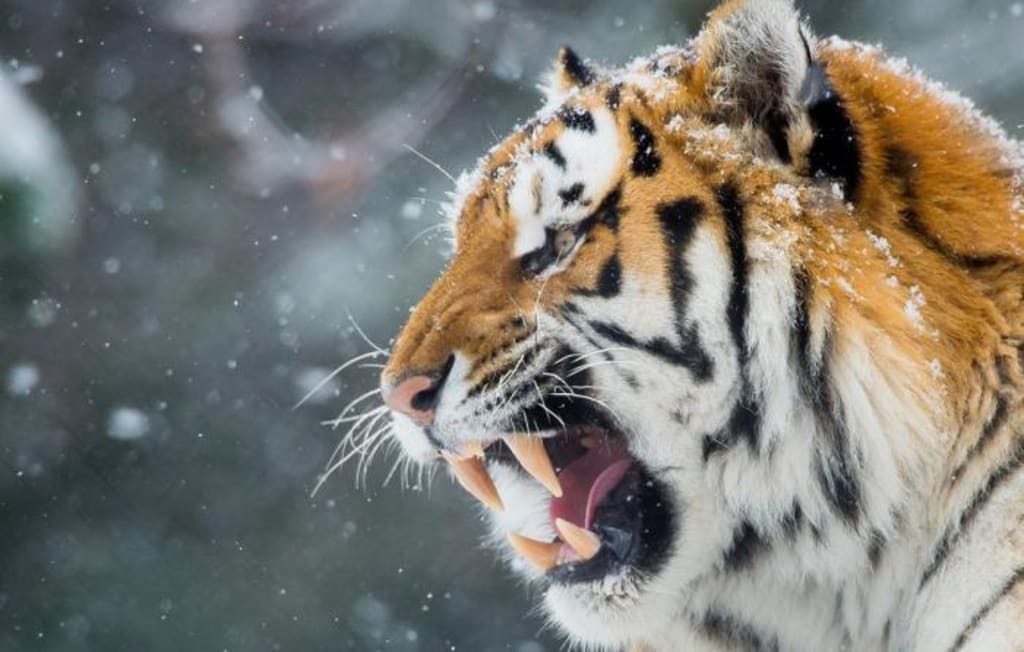
When it comes to prehistoric dominant beasts, people always like to bring out the saber-toothed tiger, but did you know that? The saber-toothed tiger does not refer to a particular animal, but a certain class of prehistoric animals with saber-tooth characteristics. This includes the subfamily of saber-toothed tigers, cat hunters, and even iguanodonts and marsupial saber-toothed tigers.
The image of saber-toothed tigers often appears in movies and television dramas, most of its prototypes are "destruction blade tooth tigers", and the main feature is large enough to look particularly fierce. Because the external characteristics of these animals are similar, so to facilitate the description, the following still use the saber-toothed tiger to replace this type of animal.
In recent years, as people study the saber-toothed tiger more and more in-depth, found that they are most proud of the "saber teeth", but also not as strong as we thought, as compared to the modern feline canine teeth, be much more brittle, once the force of the bite, it is easy to break.
The bite force value of saber-toothed tigers is also inferior to that of modern big cats. According to a related paper published in Life Sciences by some experts such as Stephen Rowe of the School of Biological Sciences at the University of Sydney, a 186.9 kg tiger has a canine bite force of 1525 Newton and a bite force quotient of 127, while a 199.6 kg deadly saber-toothed tiger has a canine bite force of only 976 Newton and a bite force quotient of 78.
What is this concept? In other words, the canine bite force of a 200 kg deadly edged-tooth tiger is not as big as the bite force of an 83 kg jaguar.
Of course, this is not the main thing, many people believe that the saber-toothed tiger's teeth are too long, blocking the mouth, how does it bite the prey? After people listed all the "shortcomings", the saber-toothed tiger and what makes it a prehistoric dominant beast?
The saber-toothed tiger is a pure carnivore. Based on its teeth, some people in the international community believe that the saber-toothed tiger is not the kind of predator we think it is, and that it gets its daily food more from scavenging, that is, the saber-toothed tiger is similar to the brown hyena, a scavenger, and its long saber teeth are not used for hunting, but for tearing open carrion.
Most of the people who hold such views are some people who are not familiar with zoology, as long as the body and teeth structure of the saber-toothed tiger, and modern scavengers make a comparison, you will not come to such conclusions.
First of all, we observe the modern scavengers, such as brown hyenas, wolverines, and so on, most of them are small in size, and they are not strong enough to use for hunting. On the contrary, most saber-toothed tigers are large and have no problem hunting most large hoofed animals.
Of course, it's not that the large size is not scavenging, such as brown bears, it's just that the probability is small, and if that's not enough proof, let's move on to the second feature.
The saber-toothed tiger's premolars and canines are so far a great distance apart, and this tooth configuration is used for hunting, a mouth down to be able to bite more parts of the prey. The teeth of most scavengers, which have a large chewing surface and a strong grinding ability, are also handy for handling the carcasses of various animals.
In general, scavengers are more "frugal", they hate to even grind the bones to eat, and never waste them, while pure carnivores are different, and each hunt is usually not eaten.
In addition, from the saber-toothed tiger's living environment, when the Earth was living with a large number of wild horses, large bison, and other animals, saber-toothed tigers eat huge amounts of food, scavenging is not enough to meet their daily needs, so it can only go hunting large animals this way. Modern research proves that the saber-toothed tiger is not only a carnivore but also a pure carnivore, rarely picking up carrion.
Teeth have weaknesses, but it depends on how they are used
Although the saber-toothed tiger teeth exist easy to break and other problems, in the Tertiary saber-tooth animals reached their heyday, many strong predators evolved saber-tooth characteristics, indicating that this structure is advantageous at the time, and to the Quaternary Earth's environment has changed, the extant felines and canines only failed to evolve this dental characteristic.
As the saying goes, a foot is short and an inch is long, and it depends on how it is used. Scientists proved that the teeth of saber-toothed tigers are more fragile, but also discovered the mystery of saber-toothed tigers when tearing prey.
The long teeth decided the saber-toothed tiger is not as brave as modern big cats hunting this, it is in the bite of prey, the force of the place is not the upper jaw or canine teeth, but the lower jaw. It is like using a strong jaw to send the prey to the canine teeth, thus protecting the canine teeth.
Although most prehistoric herbivores are relatively large, the saber-toothed tiger's long teeth enable it to always be at an advantage, instantly cutting off the throat of its prey, thus achieving a kill and preventing it from over-struggling and thus damaging its teeth.
The hunting style of a saber-toothed tiger
According to the study of saber-toothed tiger morphology, it is found that their forelimbs are generally stronger, which means that when hunting, they are often able to pounce on their prey.
According to the study of the fossil saber-toothed tiger, it was found that its leg bones were longer than those of a tiger and thicker than those of a lion, and its running speed was no worse than that of today's big cats. Its hind limbs were shorter than its forelimbs, somewhat like a spotted hyena; its short tail was less capable of turning, and based on this body structure, scientists have given a conclusion that the saber-toothed tiger would have used a chase to capture its prey, pounced on it at a run, and then used the strength of its strong forelimbs to hold it down before killing it with the above-mentioned bite.
This inference also coincides with the saber-toothed tiger to protect the purpose of the teeth, after all, with the cheetah as in the chase will be the way the prey choke to hurt teeth, this is a big taboo for the saber-toothed tiger.
As many people worry about the saber-toothed tiger teeth too long problem, it is superfluous, we should not take modern feline knowledge to understand this prehistoric animal, their mouth opening angle is not the same.
According to research, most modern felines have a mouth opening angle of 65-70 degrees, while the clouded leopard, known as the small saber-toothed tiger, was able to open its mouth at an angle of 90 degrees.
In the saber-toothed tiger, due to the special structure of the mandible and skull zygomatic arch joint fossa, its mouth can easily reach 122 degrees, so even the 26 cm long saber teeth, can hardly stop its mouth.
Overall, although the saber-toothed tiger's bite is a little less powerful than that of a modern big cat, but it is enough to allow it to hunt and kill a variety of large hoofed animals.
The long teeth are easy to break, but this is not a problem either. As long as the hunting style is right, the long saber teeth are not only not a burden but can be the most powerful output. In addition to the powerful strength and speed of the cooperation, enough to make the saber-toothed tiger in the Earth's environment at that time dominated the king.
About the Creator
Su Wei Li
The invention is one percent inspiration and ninety-nine percent perspiration。






Comments
There are no comments for this story
Be the first to respond and start the conversation.